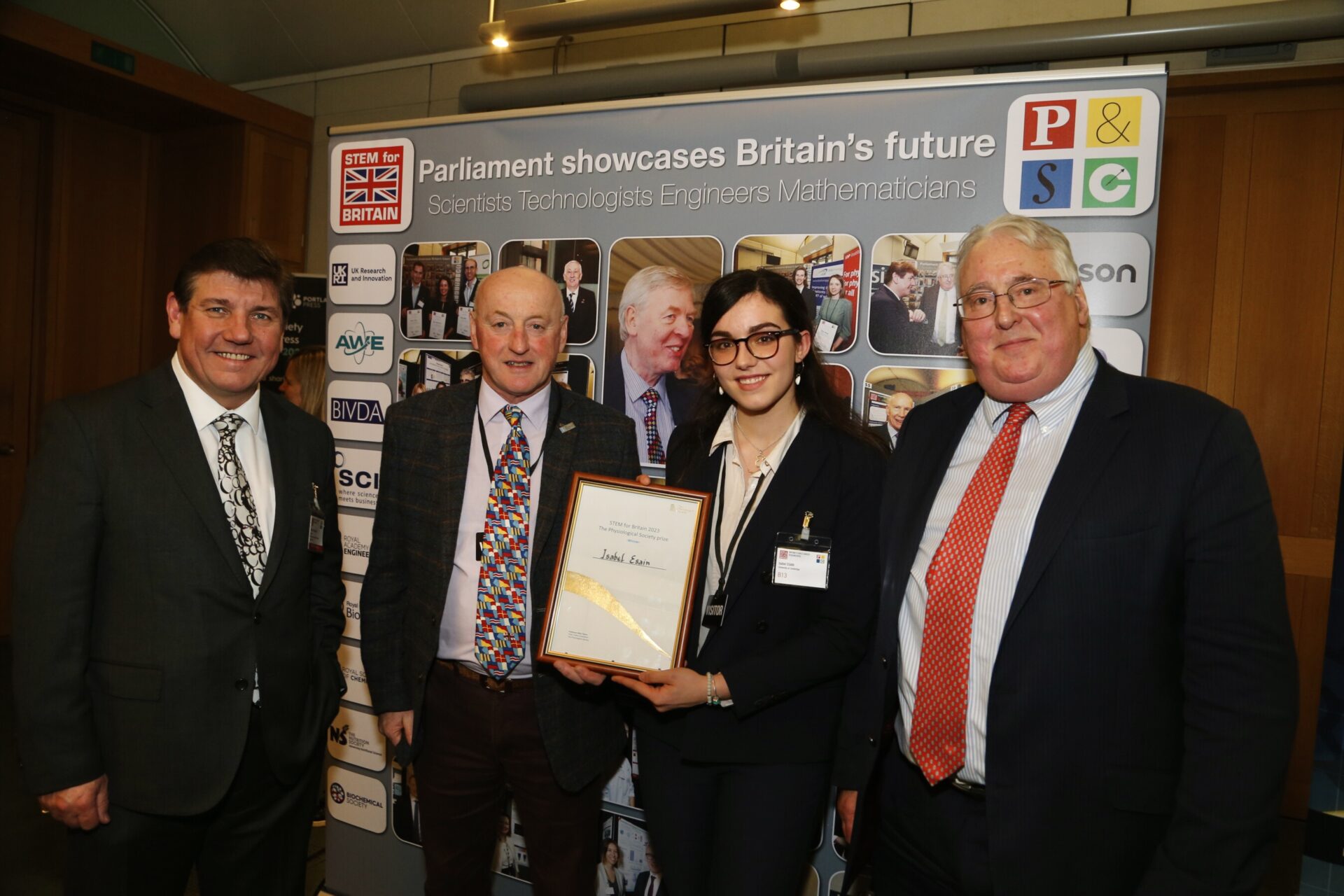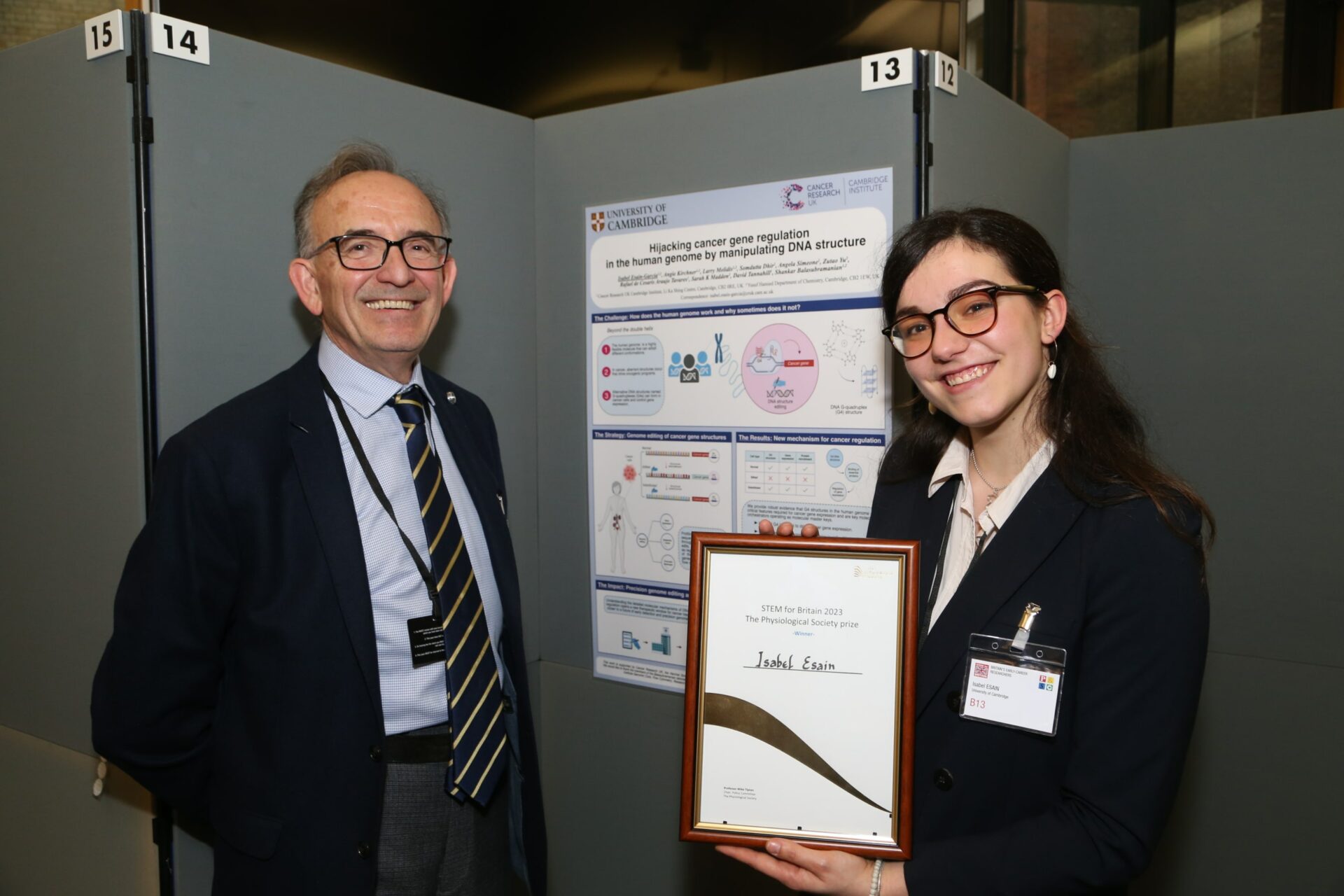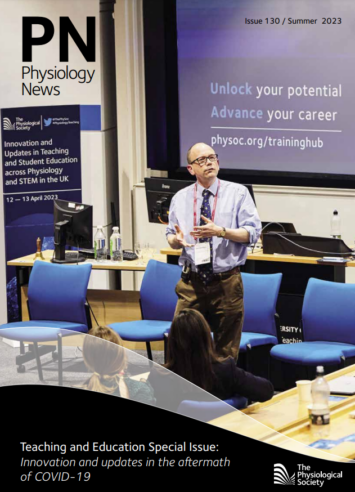
Physiology News Magazine
STEM for Britain 2023: Hijacking cancer gene regulation
News and Views
STEM for Britain 2023: Hijacking cancer gene regulation
News and Views
https://doi.org/10.36866/pn.130.9
Isabel Esain
University of Cambridge, UK
The Physiological Society Prize Winner 2023
My name is Isabel Esain and I’m a 25-year old scientist from Spain. I studied my undergraduate degree in Biochemistry at Imperial College London while jointly pursuing music studies at the Royal College of Music, after being awarded the prestigious Music Scholarship from Imperial College. My scientific interest for biophysics and genome editing led me to carry out research at Harvard University (US) and the University of Cambridge (UK), where I worked on developing new technologies for precision genome engineering. I then pursued my PhD at the University of Cambridge to feed my curiosity and fascination for how the human genome is read and interpreted. Here I have been working on how genetic information is encoded in the topological structure of DNA under the supervision of Professor Sir Shankar Balasubramanian.

Discovering molecular master keys in the human genome
The genome is regulated through chemical modifications which decorate the DNA, known as the epigenome. In cancer, abnormal epigenetic patterns lead to changes in the 3D shape of DNA which allows it to be recognised differently by the cellular machinery. My PhD project is based on the novel idea that alternative DNA structures, called G-quadruplexes, are epigenetic features of the genome that play critical roles in gene expression, particularly for cancer related genes.
The key experimental goal was to dissociate the effect of DNA structure from that of the genetic code primary sequence. To address this question, I pioneered a new genome and epigenome editing approach to modulate G-quadruplex formation in cancer cells. My findings reveal that DNA G-quadruplexes are acting like molecular master keys to control crucial molecular processes that regulate gene expression in cancer genes. This discovery overturns standard dogma and expands our understanding of how genetic information is encoded in the genome.
The most exciting part of my research is working on a novel concept with the potential to have a positive impact in the world, in a highly collaborative and multidisciplinary group. Generating ideas and applying them to develop something new can be a challenging process, it requires a lot of scientific decision making, working under pressure and learning to deal with failure and success. It is very important not only to be an independent and open-minded researcher but also to work effectively in a team. Working with others to find creative solutions to problems and having everyone’s perspectives to benefit the team is key for success in science, and this is something I experienced first hand.
Transitioning from research discoveries to therapies and health policies
I entered STEM for Britain because I think one of the most beautiful things about science is having the opportunity to share your discoveries and motivation with the wider community. The fundamental science that we do is so vital to society, medicine and industry. I believe that the future of medicine will rely on genetic methods for personalised treatments and precision therapies. Hence, translating the progress from a laboratory bench to influencing policymaking is crucial for a coordinated effort between scientists, policymakers and health regulators.
Being selected as one of the finalists and having the chance to present my discoveries in front of MPs and members of the parliamentary scientific committee was an incredibly inspiring experience. It definitely made me think about how the work I do fits into today’s society. All the research in the room was groundbreaking; that’s why I could not believe it when I was awarded the Physiological Society Award 2023 this year. Receiving such a prestigious award and seeing interest from everyone in the work I do every day drives me to continue working hard. I am striving to take us closer to a future of precision medicine tools.

